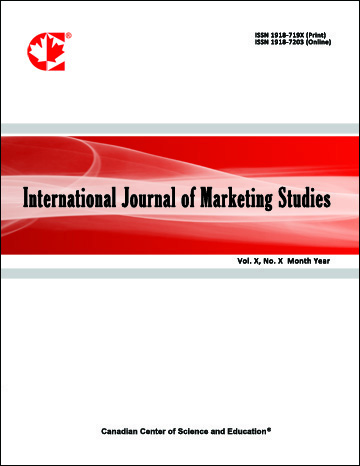Conceptual Insight into Generic Corporate Identity in the Banking Industry and a Semiotic Evidence of Its Presence in Professional Services Firms (PSFS)
- Olutayo Otubanjo
Abstract
Purpose of this paper: This paper aims to provide an insight into the dominant arguments in generic corporate identity literature – and offers evidence of the presence of generic corporate identity in professional services industry.
Design/method/approach: Existing literature on generic corporate identity is reviewed leading towards the development of three conceptual perspectives of generic corporate identity, namely active, passive and parenthetic. The weakness of existing theoretical literatures (in relation to their inability to explicate how generic corporate identity develops) is highlighted. Consequently, a new process model grounded on the notion of institutional isomorphism is presented to fill this gap. A semiotic deconstruction of corporate identity statements in annual report and accounts of the big four professional services firms in the United States is presented to provide evidence of the presence and emergence of generic corporate identity in professional services firms.
Findings: A number of findings emerged in this study. First are three pedagogical themes of generic corporate identity. Second is a four stage generic identity development process model, which explicates how generic corporate identity emerges. Third, a semiotic deconstruction of some sections of annual report and accounts of the big four professional services firms in the United States supports the presence and emergence of generic corporate identity in professional services firms.
Theoretical implication: The introduction of a generic corporate identity process model in this study clarifies how generic corporate identity evolves. This clarification aids the understanding of the development process of generic corporate identity, which until date remains vague, fuzzy and unclear. In addition, the semiotic deconstruction of texts, which gives insight into the presence of generic corporate identity in Professional Services Firms (PSF), takes the argument in marketing literature a step further. Specifically, the outcome of the deconstruction of texts indicates that the problem of generic corporate identity is not a banking problem alone but a professional services issue as well. The study adds to existing knowledge on the theory of generic corporate identity and contributes towards an understanding of corporate identity theory in general.
Practical implications: Insights into the elements that influence the development of a generic corporate identity imply that managers can map out plans that enable firms or clients to challenge or avoid the acquisition of generic corporate identities. By circumventing the development of generic corporate identity, firms develop distinct corporate identities, which position them competitively in the business environment.
Limitation of study and future research direction: The empirical evidence presented in this study merely supports the presence of generic corporate identity in professional services firms. The study does not address this issue in other service industries such as tourism, hospitality, information technology. The inability to pursue this study in these industries presents an opportunity for future research.
Originality and value of paper: The review of literature indicates that existing studies on corporate identity has focused mainly of the factors that trigger the development of a generic corporate identity without a detailed explanation how this concept emerged. This paper makes a departure from extant theory and adds an original contribution to existing literature by providing a theoretical analysis, which gives an insight into the stage by stage processes that trigger the development of a generic corporate identity.
- Full Text:
 PDF
PDF
- DOI:10.5539/ijms.v4n6p66
Journal Metrics
Google-based Impact Factor (2021): 1.34
h-index (July 2022): 70
i10-index (July 2022): 373
Index
- Academic Journals Database
- CNKI Scholar
- EconBiz
- Electronic Journals Library
- Excellence in Research for Australia (ERA)
- GETIT@YALE (Yale University Library)
- Harvard Library
- IBZ Online
- Infotrieve
- JournalTOCs
- LOCKSS
- MIAR
- PKP Open Archives Harvester
- RePEc
- ResearchGate
- ROAD
- Scilit
- SHERPA/RoMEO
- Stanford Libraries
- UCR Library
Contact
- Alyssa SunEditorial Assistant
- ijms@ccsenet.org
